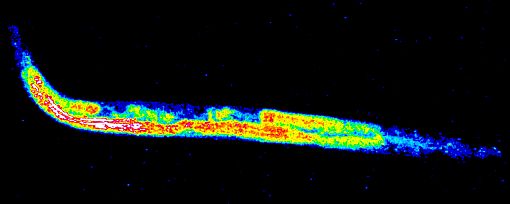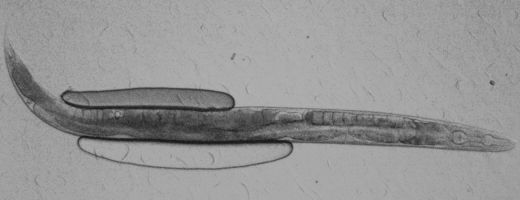A tiny roundworm that lives in the soil is helping scientists to investigate the essential role that metals play in biological systems.
Rejoicing in the scientific name of Caenorhabditis elegans, the multicellular, non-parasitic roundworm is widely used as a model system in biomedical research.
Australian researchers recently mapped the distribution of important metal elements in roundworms, using high-powered x-rays at the Australian Synchrotron. Their results provide vital information about biometal distribution in intact roundworms. Standard methods for biometals analysis typically require the roundworm to be divided into sections before it can be studied.
Principal author Simon James (AS) said the results “highlighted the potential value of the roundworm as a sensitive system in which to explore the effects of changes in metal levels and distribution”.


The research paper that announced the roundworm results is among the 25 most-read papers from 2013 in Metallomics, a peer-reviewed journal that publishes new research on the essential role of metals in proteins and biological systems.
All four members of the Australian Synchrotron’s x-ray fluorescence microscopy (XFM) team – Simon James, Martin de Jonge, Daryl Howard and David Paterson – are co-authors on the paper, along with researchers from the Florey Institute of Neurscience and Mental Health and the University of Melbourne.
The Royal Society of Chemistry, which publishes Metallomics, says the emerging field of metallomics “has the potential to impact on fields from biogeochemistry, to clinical chemistry and pharmacology, plant and animal physiology, and nutrition”.
Simon A. James, et al., Direct in vivo imaging of essential bioinorganics in Caenorhabditis elegans, Metallomics, 2013,5, 627-635. DOI: 10.1039/C3MT00010A
